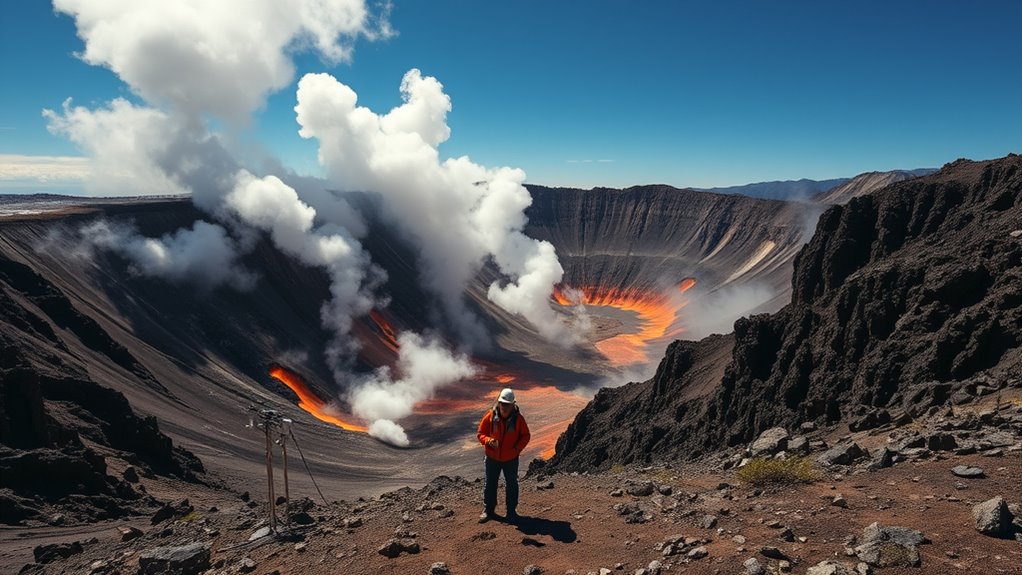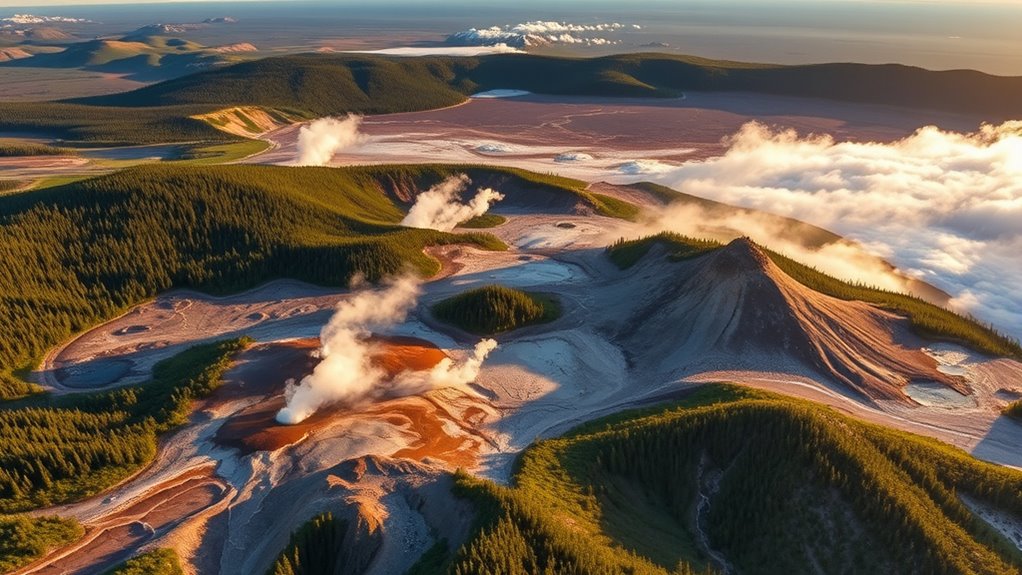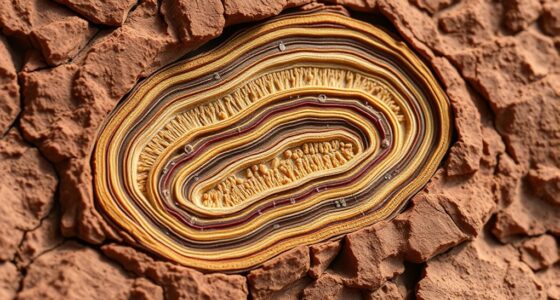Recent studies show Yellowstone’s magma reservoir is larger than previously thought, meaning its behavior could be more complex and unpredictable. This bigger underground chamber suggests there’s more molten rock beneath the surface, raising questions about eruption potential and scale. While it doesn’t mean an eruption is imminent, it highlights the importance of ongoing monitoring and preparedness. To understand how this discovery impacts Yellowstone’s future activity, there’s more to explore.
Key Takeaways
- Recent studies reveal Yellowstone’s magma reservoir is significantly larger than previously estimated.
- The expanded magma chamber suggests more complex and potentially unpredictable volcanic behavior.
- This discovery enhances understanding of Yellowstone’s geological history and underground geothermal networks.
- Monitoring efforts are crucial, as a larger reservoir may influence eruption risk assessments.
- While the reservoir size has increased, it does not indicate an imminent eruption, but warrants ongoing vigilance.

Recent studies reveal that the magma reservoir beneath Yellowstone National Park is larger than scientists previously believed, raising new questions about the volcano’s potential activity. This discovery has significant geological implications, as it suggests that the volcano’s behavior may be more complex and unpredictable than earlier models indicated. The increased size of the magma chamber means that there could be a greater volume of molten rock stored beneath the surface, which might influence the frequency and scale of future eruptions. Understanding the true extent of this magma reservoir is essential, as it helps scientists refine their risk assessments and better interpret signs of volcanic unrest. For you, this knowledge underscores the importance of staying informed about Yellowstone’s activity and understanding the potential hazards. It also highlights the need for robust emergency preparedness plans, especially for communities in the vicinity of the park. While a larger reservoir does not mean an imminent eruption, it does suggest that the volcano’s behavior could evolve in ways that require adaptive response strategies.
From a scientific perspective, this discovery prompts a reevaluation of Yellowstone’s geological history and ongoing processes. It indicates that the magma system is more extensive, possibly connected to deeper geothermal features and extensive underground networks. This complexity affects how scientists interpret seismic signals, ground deformation, and gas emissions, all of which are critical indicators used to monitor volcanic activity. For residents and visitors alike, this emphasizes the importance of paying attention to official updates and evacuation plans. Emergency preparedness becomes even more essential when new data challenge previous assumptions about the volcano’s stability. Having a clear plan, emergency kit, and staying aware of evacuation routes can make a significant difference if Yellowstone shows signs of heightened activity. Additionally, understanding volcanic hazards and their potential impacts can help communities better prepare and respond effectively.
Furthermore, this revelation serves as a reminder that volcanic systems are inherently dynamic and often unpredictable. While scientists continue to study and monitor Yellowstone closely, your role is to remain vigilant and prepared. Local authorities are constantly updating safety protocols based on the latest findings, so staying informed ensures you’re ready to act if necessary. The discovery of a larger magma reservoir doesn’t mean panic, but it does call for a cautious approach. You should review your emergency plans, ensure your supplies are stocked, and stay tuned for official guidance. In the end, understanding the geological implications of this new data empowers you to make informed decisions and contribute to community safety efforts. Yellowstone remains a fascinating yet potentially hazardous natural wonder, and staying prepared is your best defense.
Frequently Asked Questions
How Often Do Supervolcano Eruptions Occur Historically?
You should know that supervolcano eruptions are rare, with the volcanic cycle spanning hundreds of thousands to millions of years. Historically, these massive eruptions happen roughly every 600,000 to 700,000 years, though some cycles can be longer or shorter. The eruption frequency is unpredictable, but scientists study past eruptions to estimate when the next might occur. Right now, the risk remains low, but monitoring continues closely.
What Are the Signs of an Imminent Eruption at Yellowstone?
You should watch for increased geothermal activity and noticeable ground deformation, as these are key signs of an imminent eruption. Fascinatingly, Yellowstone’s ground has shifted by nearly 10 inches in some areas before past eruptions. If you notice more frequent or intense geothermal vents, tremors, or swelling of the ground, it signals the volcano might be preparing to erupt. Stay alert and heed official warnings to stay safe.
How Does the Magma Reservoir Size Affect Eruption Severity?
The size of the magma chamber directly influences eruption severity. A larger magma chamber means more magma is available, which can lead to more powerful, explosive eruptions due to increased pressure and volume. This affects eruption dynamics, making the event potentially more catastrophic. You should understand that a bigger magma reservoir heightens the risk of a major eruption, emphasizing the importance of monitoring changes in the chamber’s size and activity.
What Monitoring Technologies Are Used to Track Yellowstone’s Activity?
You rely on geothermal sensors and seismic imaging to monitor Yellowstone’s activity. Geothermal sensors detect changes in ground temperature, pressure, and gas emissions, providing early signs of volcanic unrest. Seismic imaging uses sound waves to create detailed images of the magma chamber beneath the surface, helping scientists track movements and potential eruptions. These technologies work together to give you critical insights into the volcano’s behavior, enhancing safety and preparedness efforts.
What Are the Global Environmental Impacts of a Yellowstone Eruption?
If Yellowstone erupts, you’ll see massive climate change impacts, like widespread ash clouds blocking sunlight and cooling temperatures worldwide. This could devastate wildlife conservation efforts, harming habitats and species. The eruption might also trigger long-term environmental shifts, affecting agriculture and ecosystems globally. As a result, understanding these potential impacts helps you prepare for the broader consequences on climate stability and biodiversity preservation.
Conclusion
Now that you know the Yellowstone supervolcano’s magma reservoir is larger than previously believed, it’s clear that scientists need to keep a close eye on it. While the threat might seem distant, the saying “a watched pot never boils” reminds us that some things take time to unfold. Stay informed and prepared, because in the world of volcanoes, it’s better to be safe than sorry—sometimes, the quiet before the storm is the loudest warning.









